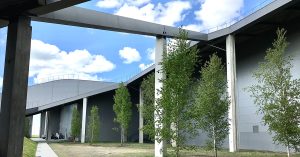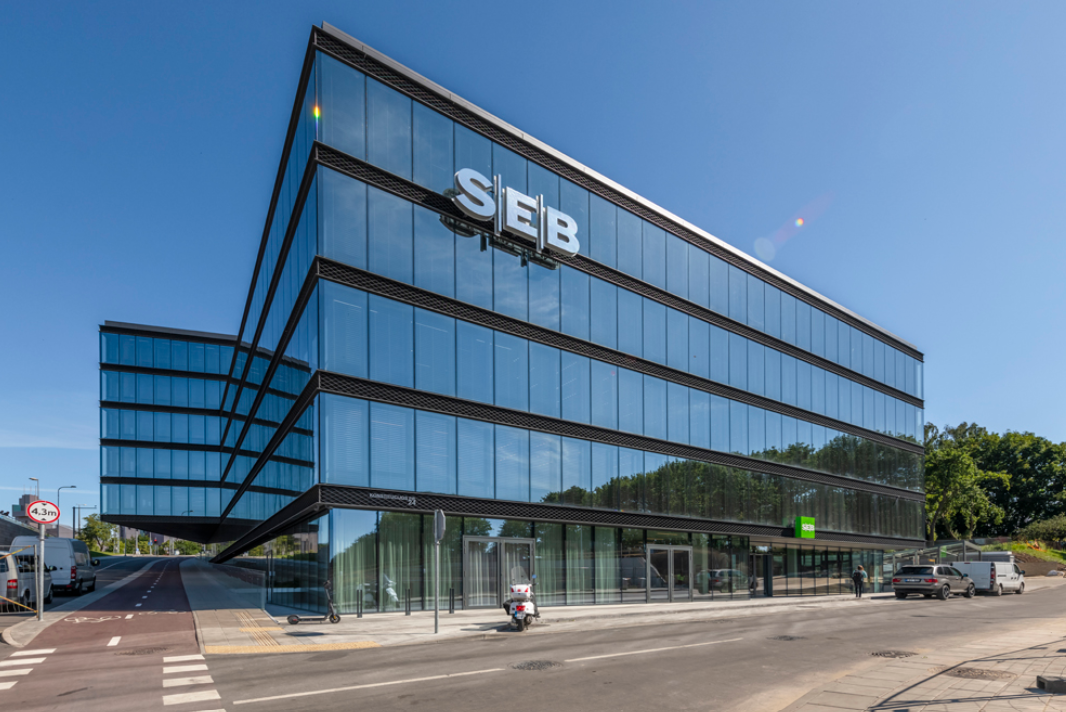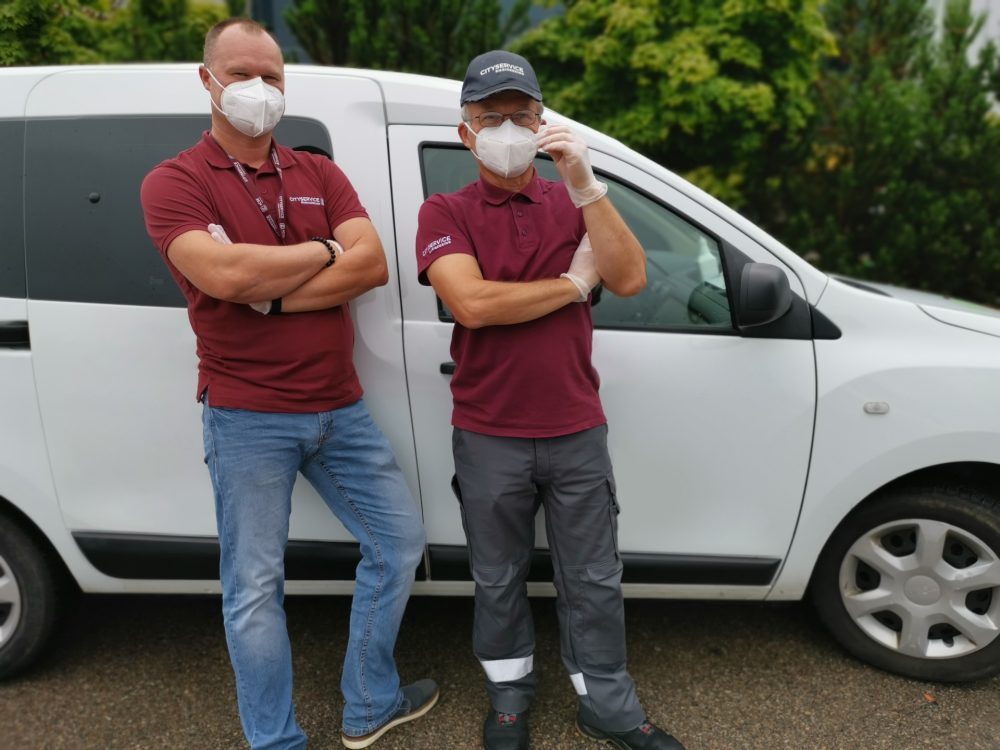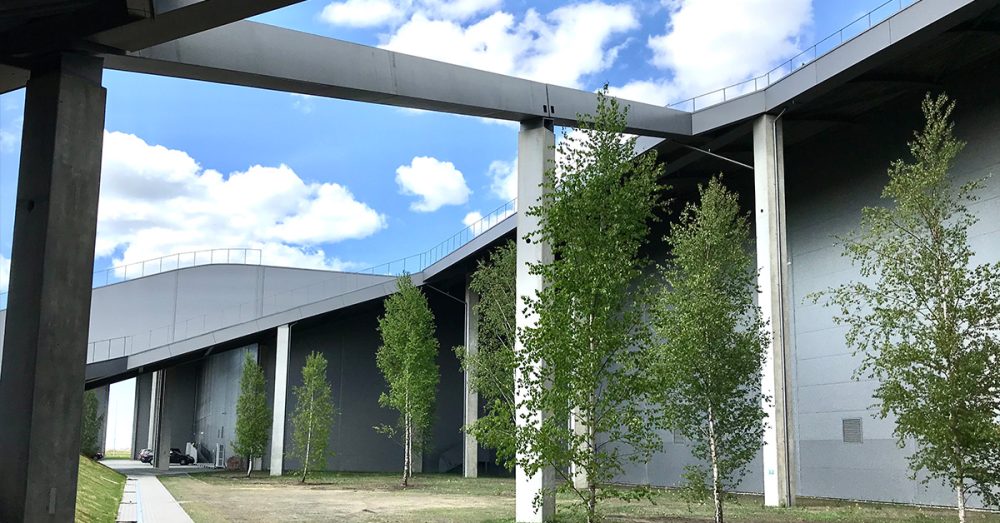€4M Contract Signed with Turto Bankas!
 City Service Engineering is thrilled to announce a new partnership with Turto bankas, the Lithuanian Government’s real estate management enterprise. Under this €4 million, three-year contract, our team will oversee the maintenance of essential government real estate assets across Lithuania, working to create well-maintained spaces that benefit both public and government operations.
City Service Engineering is thrilled to announce a new partnership with Turto bankas, the Lithuanian Government’s real estate management enterprise. Under this €4 million, three-year contract, our team will oversee the maintenance of essential government real estate assets across Lithuania, working to create well-maintained spaces that benefit both public and government operations.
We are dedicated to helping Turto bankas meet its goals of providing environmentally friendly and cost-effective real estate solutions that support Lithuania’s public sector.
Stay tuned for updates as we embark on this exciting new journey with Turto bankas!
Funding Opportunity for EV Charging Stations in Lithuania: Up to 50% Support for Businesses
The third stage of funding for legal entities in Lithuania, specifically aimed at establishing electric vehicle (EV) charging stations at workplaces, is now open?
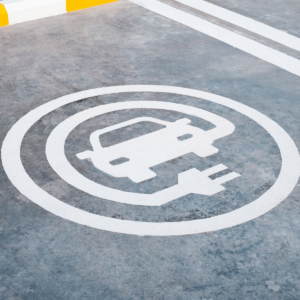
A Boost for Sustainable Infrastructure
Launched in September, this latest funding call offers a significant increase in support, with businesses now eligible to receive up to 50% funding for qualifying expenses - a notable rise from the previous 30%. With a total fund exceeding €7.4 million, there has never been a better time for companies to invest in sustainable EV infrastructure. Whether you're looking to expand your EV charging capacity or establish a completely new setup, this funding can help reduce the financial burden of going green.
How City Service Engineering Can Help
Navigating the application process and finding the right EV charging solutions can be complex. That’s where City Service Engineering steps in. Our experts are here to guide you through each step, ensuring you make the most of this opportunity. We'll help you identify the best charging options for your business premises and assist with the necessary documentation, increasing your chances of a successful application.
Key Details:
- Funding Amount: Up to 50% of eligible expenses
- Total Fund: €7.4 million+
- Application Deadline: August 29, 2025
Don’t Miss Out on This Opportunity
As the demand for electric vehicles continues to grow, providing convenient charging options at workplaces is more important than ever. By taking advantage of this funding, your company can not only enhance its sustainability efforts but also attract environmentally-conscious employees and clients.
Ready to take the next step? Contact City Service Engineering today to explore how we can support your EV charging station project.
City Service Engineering Enters Electric Vehicle Charging Solutions Market
 "City Service Engineering" is constantly seeking new opportunities to expand its operations and improve customer service. As leaders in the commercial building maintenance market, we see great potential in providing maintenance and installation services for electric vehicle charging stations. Given the rapidly growing number of electric vehicles and the needs of our existing customers, we are entering this dynamic and innovative market.
"City Service Engineering" is constantly seeking new opportunities to expand its operations and improve customer service. As leaders in the commercial building maintenance market, we see great potential in providing maintenance and installation services for electric vehicle charging stations. Given the rapidly growing number of electric vehicles and the needs of our existing customers, we are entering this dynamic and innovative market.
Our team has long-term experience in engineering and building systems maintenance, which gives us confidence in offering reliable and efficient electric vehicle charging solutions. Our goal is to help clients smoothly transition to new technologies and ensure that their electric vehicle charging infrastructure is always operational and reliable.
It is important to mention that the installation and maintenance of electric vehicle charging stations helps us contribute to creating a sustainable future. This is one of the core values of our company, and we believe it matters to our clients as well. The "City Service Engineering" team is ready to significantly contribute to the deployment of charging infrastructure in Lithuania.
"City Service" group publishes the 2023 ESG report.
 City Service Group Takes a Giant Leap in Sustainability with City Service Engineering Leading the Way!
City Service Group Takes a Giant Leap in Sustainability with City Service Engineering Leading the Way!
City Service group is thrilled to announce the release of its first ESG (Environmental, Social, and Governance) report, highlighting the organization's unwavering commitment to a sustainable future.
At City Service the company believes that responsibility for our planet and society is integral to its mission. The group's companies engage in a wide range of activities and services, catering to both individuals and businesses. The strength of this approach lies in its adaptability - City Service tailors sustainable solutions to the specific nature of each operation, ensuring that environmental, customer, and employee well-being are at the forefront of its business strategies.
City Service Engineering, a vital part of City Service Group, has been instrumental in spearheading these sustainability initiatives. As a part of our group, they have played a pivotal role in promoting and implementing sustainability ideas, particularly in the field of maintenance of commercial buildings. The application of the methodology of smart maintenance is a testament to their innovative approach.
This involvement underscores our commitment to sustainable practices throughout our operations, not just in theory but in the real-world implementation. City Service Engineering stands as a shining example of how our group companies are actively working towards a greener and more sustainable future.
One key aspect that City Service is immensely proud of is its dedication to energy conservation and the reduction of CO2 emissions. The organization acknowledges that energy resources are vital to its daily operations but has also embraced sustainable practices that help preserve natural resources and decrease the carbon footprint.
What's truly remarkable is the ripple effect that these efforts create. As City Service prioritizes sustainability, it's not just making an impact within the organization. It's inspiring customers and employees to follow suit, promoting a collective journey towards a greener, cleaner, and more responsible world.
City Service Group is not just about business; it's about building a better future for everyone. The ESG report serves as a testament to the company's ongoing commitment to a sustainable and responsible world. City Service Group invites all stakeholders to join the organization on this journey and share their thoughts on how City Service can do even better in its pursuit of a better world.
Let's create a brighter, more sustainable future together!
When to remove snow from the roof of a commercial building?
Commercial building owners and supervisors need to pay attention to snow accumulations on the roof. You should remove the snow from a flat roof because it can create many problems if left where it falls. Of course, the type of roof structures must be taken into account individually, because snow loads and possible damage can vary depending on it. In practice, the recommendation is that when the snow thickness exceeds half a meter, it is mandatory to remove the excess snow from the roof.
A building may suffer these negative effects if snow is not removed:
- Blocked access to building systems and features
- Snow and ice may fall off roof edges
- Damage the drainage system
- Damage the roofing membranes
- Heavy loads of snow can cause the roof to collapse.
Here is a list of signs that indicate a building may be too stressed by the snow load. These include:
- Ceiling problems: A sagging ceiling or sprinkler heads and lines that appear to be lower than usual.
- Unusual noises: A strained roof may make noises like creaking, popping, and splitting.
- Roof member problems: Any area of a roof or roof truss that sags should be taken seriously.
- Drainage problems: Unusual water accumulations on the flat roof could be a clue that this section has sunk. These submerged areas might not be apparent until the snow has melted.
- Door and window problems: If a door or window cannot be opened or shut, the walls or roof may have moved due to the weight of the snow.
- Wall problems: Drywall, masonry, and other wall components are susceptible to cracking when a roof is overloaded.
Here at City Service Engineering our staff inspects customers' roofs, and equipment on it once a month or after a heavy blizzard, and also measures the actual thickness of the snow and the loads caused by it. It is important to note that fresh, thawed wet snow has different densities and mass. Average snow density is +- 250-280 kg/m2, the one that just fell out 150 kg/m2, during thawing 320-380 kg/m2. In our region, on average, roofs can withstand 122 - 160 kg/m2. Cleaning of the roof is scheduled when it is determined that the critical limit is getting close.
How to maintain buildings during COVID-19?
How to maintain buildings during COVID-19?
The surprise wave of COVID-19 this year has become a major challenge for almost the entire business sector. The inconvenience caused by the pandemic not only demonstrated the resilience of businesses, but also the ability to respond to the situation in a flash, flexibly adapting to the crisis caused by the virus. It has become clear that in some industries, the traditional business model is not prepared for such challenges, and provision of physical services to customers is either insecure or impossible at all. Building managers have to choose between saving energy resources and more intensive ventilation and virus prevention. As with everything these days, you need to respond quickly and professionally. So how do you maintain buildings in these extraordinary circumstances?
Is disinfection important?
The recommendations of the Lithuanian Ministry of Health, which are based on the latest guidelines of international organizations, advise to clean all premises / surfaces as often as possible during a pandemic in order to stop the spread of COVID-19 virus as effectively as possible. Both daily indoor hygiene with preventive disinfection and disinfection after the detection of COVID-19 are necessary measures to reduce the risk of COVID-19 infection and to eliminate it completely.
Success stories and good practices - digitization of buildings
Buildings without remote control are indeed facing challenges. Even those with BMS systems often become inaccessible. In principle, we successfully manage those buildings that are digitized and connected to the APEX Intelligence remote control center. This is a new model of building maintenance, which makes building maintenance significantly more efficient, requires less inefficient actions, ensures continuous maintenance of systems, reduces the risk of equipment downtime, increases work efficiency and saves energy costs. Building systems are constantly monitored remotely, data flows are analyzed, and thanks to appropriate algorithms, the system automatically informs about equipment failures and anticipates possible failures and losses. With enough data, we can immediately form the best solution / control algorithm. For example, when the humidity and temperature outside changes, we can react quickly and change the parameters. Thus, we can maintain a balance between health, because we work remotely and finance energy costs.
"eCSE" is a tool for your phone
We are responsible for the maintenance of your property, therefore we would like to emphasize once again that we are able to organize the management of buildings without direct physical contact at the client's site. Use "eCSE", a self-service platform and mobile application for all users of the facility, for convenient and secure communication. Many of our customers are already convinced that this tool can solve problems faster, more conveniently and, most importantly, more safely, as physical contact is eliminated.
Other relevant tips
• If the flow of people in the building decreases, it is necessary to review the heating, ventilation and air conditioning parameters to meet the needs of employment or operation. Unnecessary costs would be avoided. Keep in mind the risk of quick temperature decreases. Also pay attention to supporting systems, the operation of circulating pumps.
• Secure the power supply.
• Even if buildings are not occupied, insufficient temperature and humidity control can cause mold to grow.
• Keep the temperature of the building between 13 and 27 degrees and the humidity (in case of a virus) between 50 and 65%. However, do not exceed the dew point values.
• Carry out preventive maintenance (heating, ventilation and air conditioning, power supply, lighting) until the buildings are occupied.
• Perform a preventive inspection of emergency power supply systems for use if necessary.
Contact us if you have any questions or would like to consult.
Are your buildings ready for the heating season?
As the heating season approaches and in order to avoid problems, it is necessary to properly prepare the heating systems of buildings.
Key steps to take:
• Clean or inspect the chimney (if any).
• Prepare the heating appliance for the season, clean and adjust it.
• If the heating system has intermediate heat exchangers - they must be cleaned for hot water preparation and heating, otherwise the efficiency of the heating system will decrease. This can cause problems such as not having enough heating on a very cold day.
• Check the operation of all circulation pumps.
• Clean the heating system dirt collectors.
• Top up the heating system to operating pressure.
• Bleed air from the heating system.
• Check the expansion vessel.
• Check the operation of all automatic actuators / valves.
• Check the operation of all temperature sensors.
• Check protection systems against water pressure increase; from an increase in temperature (if any).
• Check the shut-off valves, as they must be leak-proof in an emergency.
• Repair (if damaged) the insulation of the heating pipes to prevent heat loss.
• Check the thermostatic valves of all heating appliances (they are usually mounted on radiators).
• Check the operation of the controls in the room (sometimes they work with batteries, check for discharge).
It is recommended to periodically inventory the heating system of the building, checking whether the heating devices and stand balancing devices correspond to the design project. The inspection may be carried out by the building manager or the building heating and hot water system supervisor.
As the heating season accelerates, temperature fluctuations usually cause significant heat loss during the day / night, even with automated microclimate control. Buildings are overheated and thus heating costs increase. Due to this unstable heat demand, it is necessary to additionally control the buildings and change the settings of the equipment, depending on the outdoor weather conditions. This optimizes the cost of heating buildings.
Our customers can await the heating season calmly, because in the facilities where we maintain the heating system (s), we perform the planned work preventively. We understand that consistently preparing for the heating season increases the efficiency of heating, the service life of the heating system is increased, and more energy is absorbed. Conversely, without periodic maintenance of equipment, there is an increased risk of freezing the building, spilling water in the premises, or damaging the equipment. Therefore, it is very important to prepare the buildings responsibly and in time for the heating season.
New agreement with SEB bank
At the beginning of the autumn, new important customer joined a base of the long-term customers of “City Service Engineering”. This demonstrates yet again the importance of continuous improvement. From now on we will maintain the customer service divisions and administrative premises of SEB bank throughout Lithuania. We have 27 objects in our account! We will also provide services of dealing with emergency situations.
“The customer choice, without doubt, was determined by our professionalism and excellence in the Energy sector. We earned customer confidence with our experience and implemented projects, and it evolved into a cooperation. We believe that together with SEB bank we will manage to deliver excellent results”, - says Šarūnas Šetikas, the Head of Sales Team at CSE.
How do we organise work during the COVID-19 pandemic?
There are some services related to commercial building maintenance, such as work of emergency service, that cannot be provided remotely. The Company continues organising activities of the emergency service and of the specialists performing various repair works in such a way that allows as little contact with customers as possible. The specialists are supplied with all necessary safeguards, and therefore they go to objects in full preparedness and abiding to preventive measures.

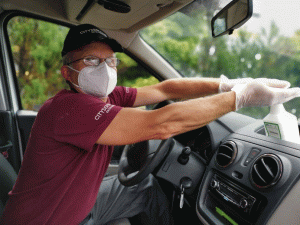
Placing a respirator on the face
• Before placing a respirator on the face, be sure to disinfect your hands.
• Before taking off a respirator, be sure to disinfect your hands, also wipe the inside and outside of the respirator with a disinfectant wipe or disposable handkerchief dampened with disinfectant. After cleaning, place the respirator in a bag.
Hand disinfection (these rules also apply when the worker is wearing gloves)
• Before placing a respirator on the face, hands need to be disinfected and gloves to be put on. Following these steps, the respirator can be placed on the face.
• When taking off a respirator, hands need to be disinfected, the respirator and gloves taken off, and then hands need to be disinfected once again.
How to disinfect hands?
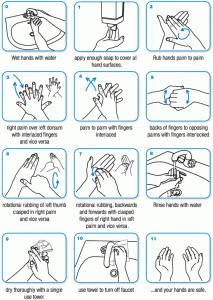
New agreement with SBA Technology and Innovation Park
We are proud being able to offer our customers smart building maintenance solutions – through the use of building management system (PMS) which makes it possible to remotely control engineering systems in a convenient way and to optimize energy consumption of the building
“We are very happy with this new customer that is the leader in its business sectors and continuously introduces the latest technologies not only in production processes but also in building stock management processes. It is a welcome fact that the customer approach to building stock management coincides with our experience and digital tools, using which we can provide quality services”, - says Ignas Urbonas, Head for Western and Central Lithuania Regions at City Service Engineering. Let‘s go forward and never stop!
